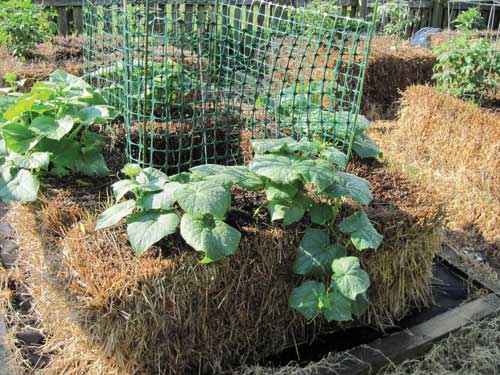I’ve recently found an even better idea than straw bale gardening, and that is hay bale gardening!
Straw bales are usually comprised of stalks of plants, mostly corn, that have been dried out and baled. Most straw bales consist of genetically modified plant matter, from corn or soy. It is definitely important to know the source.
Hay bales produce more efficiently then straw bales because of:
- Adding Nitrogen, feeds the bacteria and fungi starting the decomposition process called “Conditioniong your bale”.
- Due to the temperature rising any hay seeds would die, so not to sprout.
- Hay bales being made of grasses have the ability to convert sunlight and soil minerals into dense nutrition, whereas straw bales require fertilizer.
- Hay bales only need watering once a day vs multiple times a day for straw bales.
 It is really easy to find hay bales to get your garden started!
It is really easy to find hay bales to get your garden started!
It is also suggested that peeing on your bales is very beneficial, it is high in nitrogen and minerals. You can save up pee bottles for saving on fertilizer.
Directions for Conditioning:
Note: Although risk of fire is minimal, think of this when deciding the placement your hay bale garden.
On Days 1,3,5,7,9 – Add 1/2 cup of nitrogen to your bales and spray them with water to soak the nitrogen in.
On Days 2,4,6,8,10 – Soak the bale with water only.
Throughout the conditioning process, the temperature of the bale will rise possibly, up to 140 degrees Fahrenheit. The bales can become very hot, it’s important to keep them wet to eliminate the risk of a fire. Once the temperature inside the hay bale returns from hot to just warm, it is time to plant! You can plant seeds or germinated plants into the hay bale garden, and water once a day. It won’t be long until you’re enjoying your own organic food. At the end of the harvest you can use the entire garden for compost, and repeat the process again.
Original Article: https://www.endalldisease.com/hay-bale-gardening-effortless-food-production-with-no-weeds-no-fertilizer-less-watering-video/




